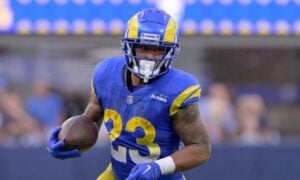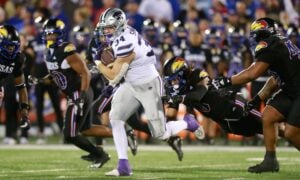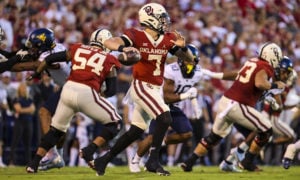Dynasty GAAP Memo: Roster Construction, Stability and Player Liquidity
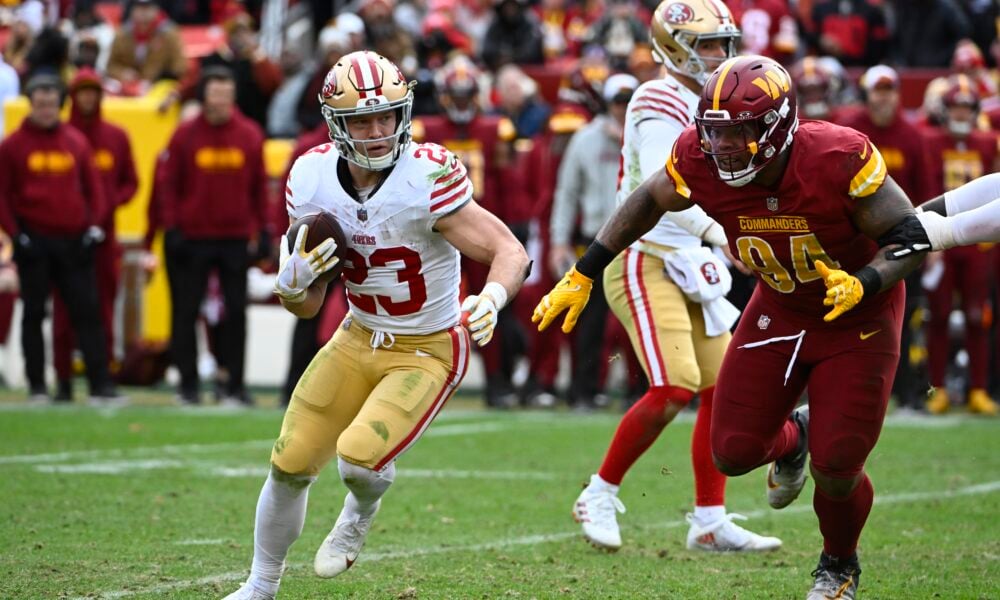
I am a CPA who fits the typical accountant stereotype. I enjoy writing technical accounting memos, accounting research (yes, it’s a thing), and analyzing the financial statements of a business. In accounting, you often must evaluate qualitative and quantitative factors during complex transactions to forecast future performance. I have found that the outlook and rationale of evaluating business transactions parallels another interest of mine, dynasty fantasy football.
In dynasty, we are given both quantitative factors (athletic scores, draft capital, college production, etc.) and qualitative factors (camp hype, team situation, injury history, etc.) that we must consider and evaluate to derive an estimate or projection of a player. Then, we must take calculated risks based on our team’s overall financial statements (i.e., current roster and league). I could go on and on with accounting-based puns and comparisons, but I think you get it.
I will note that I will write in the form of “accounting memos”. For anyone who has not been exposed, the format is very standard. Each memo will start with the “purpose”. Next, it will outline the applicable “guidance” or accounting literature utilized and supply background. Last will be the analysis and conclusion. The goal is to state the issue and quickly address it. My write-ups will follow this same logic.
To summarize, welcome to “Good at Analyzing Players” or “GAAP”. And yes, this is a play on “Generally Accepted Accounting Principles” and my wife did come up with it.
Purpose
To evaluate how to apply financial stability and liquidity to evaluate your roster construction.
Background
As we get further and further away from the 2023 fantasy playoffs, the dynasty community’s value on players over 25 will start depreciating. Players in the twilight of their careers (and peak production) will have value surges in-season, as competing teams want to maximize points within their lineups. In the off-season, points start to matter less, and we pivot towards “building the perfect roster” filled with youth. The line graph below indicates the cyclical nature of value for these older players.
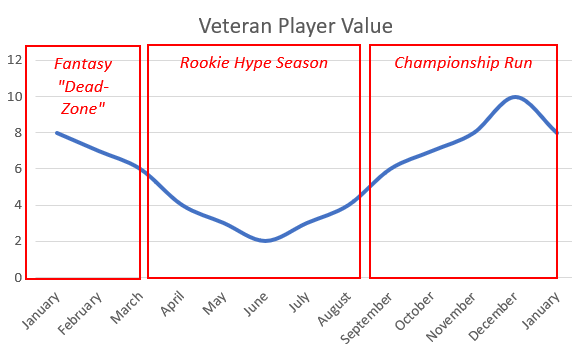
Within the graph below, I also indicated a few phases of dynasty season:
- Fantasy “Dead-Zone”: This is the time after the fantasy playoffs are finished and leagues are rolling over to the next year. A lot of leagues could go dormant. This is also where most dynasty owners join a random startup to feel something and still check player scoring from the previous season.
- Rookie Hype Season: One of the biggest draws to dynasty is the rookie draft. This is when most dynasty owners lock in on youth. We all get to open our brand-new shiny rookies that Santa brings and we forget about all our old toys.
- Championship Run: This phase is when we start to realize rookies often do not produce right away or our favorite breakout candidates did not materialize into weekly viable options (i.e., Elijah Moore, Jahan Dotson, etc.). We will forgo youth for production at the expense of youth.
Lather. Rinse. Repeat.
This memo will expand upon this cyclical nature and examine ways to better position your team construction, specifically discussing “roster stability” and “player liquidity.”
Resources:
- Sleeper: Great interface for looking up historical statistics
- DLF Dynasty Rankings: Best dynasty rankings in the industry
- DLF Average Draft Position (“ADP”) Data: Best resource to gauge current player value. Based on real dynasty startups.
Analysis
One of the biggest draws to dynasty is that there really is no “off-season”. We get to participate in and follow this hobby year-round. What I have found that sets my dynasty leagues apart is the consistency and engagement of dynasty managers. At any day and any time, I could get a trade offer from one of my league mates (365 days a year; 24/7). That is incredible and what makes this format so addictive.
However, some managers do not get to participate as much. This leads to me hearing things like:
- “My league is not very active.”
- “No one ever sends me trades.”
- “That’s an objective overpay!”
These narratives might be a symptom of the phases of the dynasty season and roster construction. Your roster might not be stable enough with sought-after players who league mates want. The themes below can be applied to increase your trade activity in your leagues.
Financial (or Roster) Stability
As a business owner, if you are making money, that does not mean that you are financially stable. Financial stability is the ability to withstand a temporary problem, such as a decrease in sales, lack of capital, or loss of a key employee or customer. Analyzing your cash flow and a variety of negative scenarios will help you determine whether your business is financially stable.
The same sentiment should be said about your dynasty roster. You may have just won your league on the back of Mike Evans (WR7 in 2023), Davante Adams (WR10 in 2023), and Raheem Mostert (RB5 in 2023). However, there are scenarios where those three are not weekly viable next year as all are going to be on the wrong side of 30, and father time is undefeated. I often will hedge value during the “dead zone” by moving veterans to get younger players before their value craters during “rookie-hype season.” I can buy comparable veterans back when the injection of rookies pushes their value down.
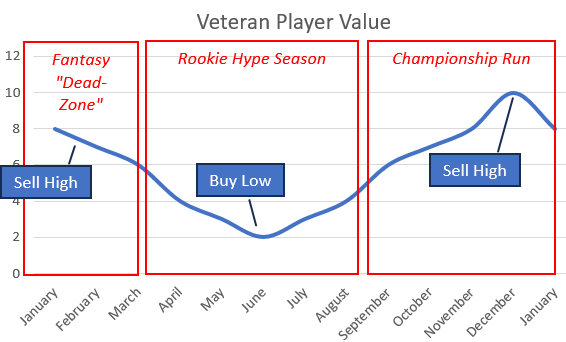
This works for rebuilders as well as contenders. If you are a contender coming off a playoff push, you will have multiple veterans that you can sell high and then proceed to buy low during rookie hype season. For rebuilders with a lot of draft capital, you could buy low during rookie hype season and sell early in the season as values pick back up.
Overall, when I am dealing with veteran players, I always think about where I am within this life cycle.
Player Liquidity (or Flexibility)
Another element that I always consider when trading is a player’s liquidity. In finance, liquidity refers to the efficiency or ease with which an asset can be converted into cash without affecting its market price. The more liquid an asset is, the easier and more efficient it is to turn it back into cash. Less liquid assets take more time and may have a higher cost.
If we apply this to dynasty, more liquid players are easiest to trade. For example, if you try to trade Justin Jefferson, you should get interest from almost 100% of your league. I always want to acquire flexible assets, so I can capitalize on opportunities as they come up. This flexibility can be needed due to trying to buy youth, remediate an injury, change in situation, “rookie crushes,” or just a change in community consensus. I always try to be the person sending the less liquid asset for a more liquid one, even if I give up “value” in the process. The central theme is that you can always do another trade. You may lose on “the first trade” based on trade calculators or consensus. However, this could reposition your roster and lead to a second or third trade where you accumulate value.
Not only does this present an opportunity to pick up value, but there is also no better source of dopamine than negotiating and completing a dynasty trade. Applying this theory could increase your mental health and the health of your dynasty teams.
Conclusion
In conclusion, the “phases” of the off-season, roster stability, and player liquidity are pivotal considerations when negotiating in dynasty. Here are a couple of scenarios that depict these concepts:
Scenario 1: You just came in second in your league with an aging roster full of veterans.
- Send: Mike Evans, WR TB (30 years old)
- Receive: Chris Godwin, WR TB (27 years old)
Evans has been a top 24 WR for a decade. Let that sink in. However, he will be 31 before week one of the 2024 season and potentially on a new team as it looks like he will be a UFA for the first time in his career. Meanwhile, Godwin could be walking into the WR1 role and 28 next season. A 28-year-old WR with a proven track record is a lot easier to trade than any 31-year-old receiver on a new team (see Odell Beckham Jr to the Ravens in 2023). Additionally, you get to stabilize the longevity of your winning window and “buy back years.”
I do see a scenario where Evans follows Larry Fitzgerald’s twilight years where he was fantasy-viable well into his 30s. Therefore, there is always an opportunity to buy Evans back later.
Scenario 2: You won your league on the backs of the 2017 running back class (i.e., Christian McCaffrey, Alvin Kamara, Joe Mixon, Aaron Jones, etc.) with little WR depth. Disclaimer: This is a true story and I did this trade.
- Send: Christian McCaffrey, RB SF (27 years old)
- Receive: DeVonta Smith, WR PHI (25 years old), and 2024 mid-second (2.07)
This one is interesting, but with all the aging RBs on this roster, I needed to stabilize because the age cliff was coming quickly. I am also not a dynasty owner who goes all in on winning championships. I have too much bad luck for that. Overall, my lineup got significantly worse with this move. McCaffrey averaged 24.5 points per game in 2023 and was the overall #3 scorer on the season. Meaning, in this superflex league, he gives you the ability to start three QBs per week. As such, my weekly upside depreciated by 15-20%. However, the league in question is obsessed with young WRs (high liquidity) and has disdain for RBs (low liquidity).
I also like to build through young WRs for roster stability. This will allow me to leverage draft capital as a revolving credit to add additional assets each year (through rookie drafts and/or trades).
“If you have wealth without liquidity, you’re still in bondage. If you have capital without currency, you’re still in bondage. Liquidity equals freedom.”
- Dynasty GAAP Memo: Diontae Johnson - March 29, 2024
- Dynasty GAAP Memo: 2024 Free Agent Wide Receivers and the Christian Kirk Model - March 11, 2024
- Dynasty GAAP Memo: 2024 Free Agent Running Backs and the Christian Kirk Model - March 1, 2024







